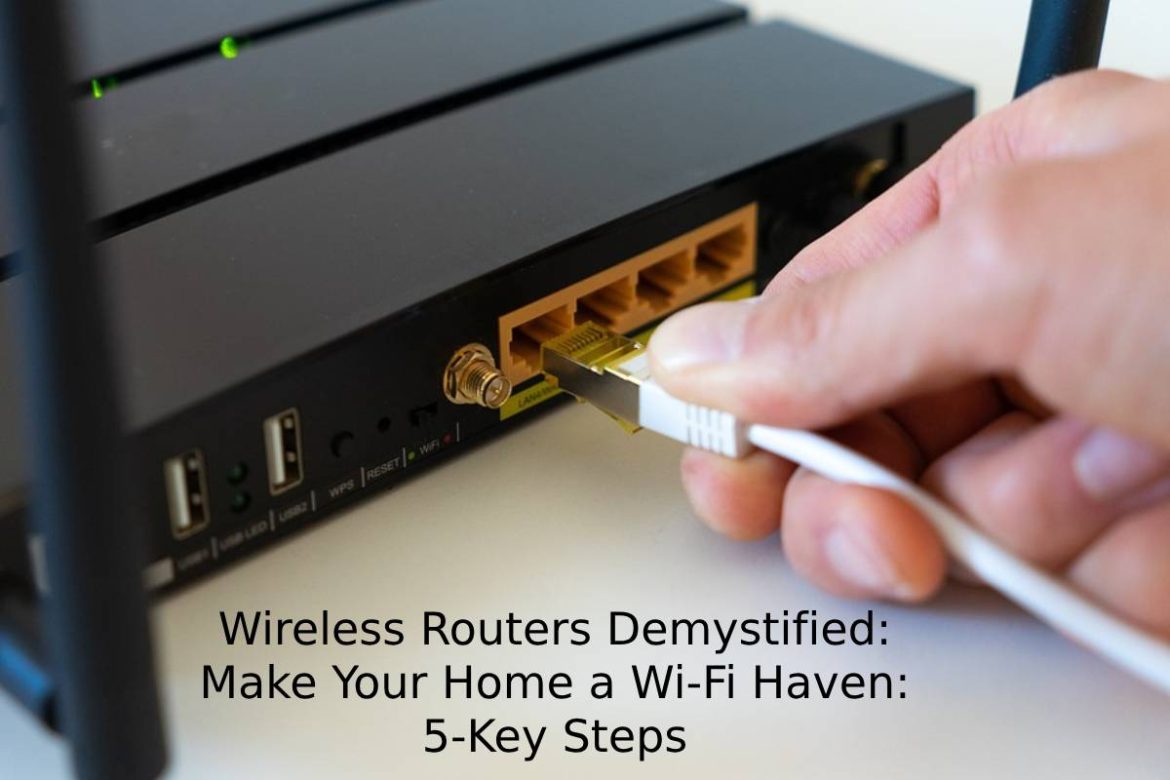Are you tired of dealing with slow internet speeds, dropped connections, and dead zones in your home? The solution lies in choosing the right wireless router for your needs. In this article, we’ll demystify the world of wireless routers and guide you through the process of selecting and setting up the perfect router to turn your home into a Wi-Fi haven.
Table of Contents
Step 1: Understand Your Needs:
Before we dive into the world of wireless routers, it’s essential to understand your internet needs. Consider the following factors:
- First, think about how many devices are going to be on your network. Are you a smart house with many cell phones, tablets and smart home gadgets? Or maybe you have very few but necessary devices in a simple home? Knowing this will help you choose a router capable of handling the bandwidth demands.
- Then, think about the kind of internet activities that will take up most of your time. Will it be watching a new series you can’t stop yourself from binging on in stunning 4K quality? Or participating in fierce gaming clashes on the internet where each millisecond holds importance for winning? Perhaps you are a simple browser, happy just to surf the web and read emails. Every task needs various speeds and performance from your wireless router.
- Finally, you should think about how much money you can spend. Wireless routers are available in various price ranges, starting from inexpensive choices to high-end models that have many features. To provide a good wireless experience at a reasonable cost, it is important to find the correct equilibrium between what you require and what your budget allows for.
Understanding your needs will help you choose a router that meets your requirements and provides a seamless internet experience.
Step 2: Choose the Right Type of Router
There are several types of wireless routers available, each with its unique features and benefits. Here are the most common types:
Dual-Band Routers
Dual-band routers operate on two frequencies: 2.4 GHz and 5 GHz. They offer better performance and reduced interference, making them ideal for households with multiple devices. Dual-band routers are perfect for households with heavy internet users, as they provide faster speeds and reduced interference
Gigabit Routers
Gigabit routers offer faster speeds and are suitable for households with heavy internet users. They’re perfect for online gaming, 4K streaming, and large file transfers. If you’re looking for a router that can handle heavy internet usage, a gigabit router is an excellent choice.
4G LTE Routers
4G LTE routers use cellular networks to provide internet connectivity. They’re ideal for areas with limited or no wired internet access. If you live in a rural area or have limited internet options, a 4G LTE router can provide a reliable internet connection.
Step 3: Consider Key Features
When choosing a wireless router, consider the following key features:
- Speed: Imagine a world where buffering is a non-issue, and streaming your favorite shows in glorious 4K is as smooth as silk. To achieve this, seek out routers with speeds of at least 1200 Mbps (megabits per second).
- Range: Opt for routers with a strong signal and impressive range, allowing you to roam freely from the kitchen to the backyard, without sacrificing a stable connection. Bid farewell to dead zones
- Security: In the digital age, protecting your online presence is paramount. Prioritize routers with built-in security features, such as firewalls and parental controls. These safeguards will shield you from digital threats, ensuring your family’s online activities remain secure and protected.
- Number of Ports: Envision a harmonious ecosystem where all your devices coexist in perfect harmony. Consider the number of devices you need to connect via Ethernet cables, and choose a router with ample ports to accommodate them.
Step 4: Set Up Your Router
Once you’ve chosen your router, follow these steps to set it up:
- Unbox and physically install the router in a central location.
- Connect to the router using a computer or mobile device.
- Follow the manufacturer’s instructions to configure the router’s settings.
- Set up a strong password and enable WPA2 encryption.
- Configure Quality of Service (QoS) settings to prioritize traffic for critical applications.
Step 5: Optimize Your Wi-Fi Network
To ensure a seamless Wi-Fi experience, follow these optimization tips:
- Update Your Router’s Firmware: Regularly update your router’s firmware to ensure you have the latest features and security patches.
- Use a Wi-Fi Analyzer App: Use an app to analyse your Wi-Fi network and identify channels with minimal interference. Some of the best wi-fi analyser apps include: NetSpot and ScanFi
- Change Your Wi-Fi Channel: Switch to a less crowded channel to improve your Wi-Fi performance.
Conclusion:
By following these steps, you’ll be well on your way to creating a Wi-Fi haven in your home. Remember to choose the right type of router for your needs, consider key features, and optimize your WiFi network for a seamless internet experience.

